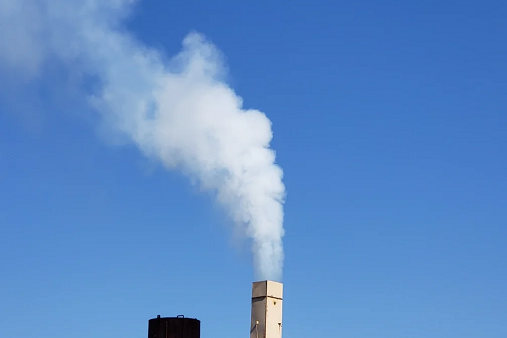When evaluating a new project many factors are involved in determining if you need an air permit or a modification of an existing permit. Following is an attempt to lay out the necessary steps to evaluate when looking to construct a new site or make changes at an existing site.
Existing site:
- Does the site have an existing air permit?
- If yes, you may have to revise permit. If no, you may have to apply for a permit.
- Is the change an exact replacement in kind for existing equipment? If yes, no permit change should be required.
- If no, will the change result in any increase of any emissions of any pollutant or result in emissions of new pollutants not currently emitted. If the answer is yes a permit/ permit modification may be required.
- Does the change meet any of the listed exempt activities listed in the state regulations?
- If not does the change meet the requirements for insignificant activities in the state regulations?
- If the project is not a replacement in kind, an exempt source, or if it meets the definition of an insignificant activity, then you will have to proceed to a permit/ permit modification.
- You will need to have an exact emission inventory for the change in pounds/tons per year. Typical pollutants are NOx, SO2, particulate, VOC, and HAPs (hazardous air pollutants listed at 40 CFR 63). Note: for new projects the emission numbers have to be calculated as potentials to emit. This means emissions before any control device. When determining which permit track you must take you must look at the incremental potential to emit, not actual emissions.
- Does your change in emissions exceed 10 TPY of any one HAP, 25 TPY of total HAPs, or the threshold of any of the conventional pollutants NOx (40 TPY), SO2 (40 TPY), particulate (25 TPY), or VOCs (40 TPY)? (Note if you are in a non-attainment area you may have lower thresholds for the conventional pollutants depending on the degree of non-attainment). If you exceed any of these thresholds, your project will be a major modification and will require further evaluation as noted below. If no, proceed to item 10.
- If your site is currently not a major source (see thresholds in item 9), will this project added to current permitted emissions put your site over the threshold? If yes, this project will be a major modification. If not, your project will be a minor modification and will require you to submit a permit application to the state.
- If your project is a major modification, then you will have to evaluate whether you are subject to Title V, PSD, NSPS, and MACT requirements. These are very complex rules and I recommend that you get a consultant involved to help sort out the requirements and complete the permit application.
Before beginning any project, you need to have your current site emissions (need a complete site emission inventory) and then the exact emissions change of the pending project. In some cases there may actually be a net reduction in emissions but if there are changes to any emission control equipment (even just changes in operating parameters), or installation of new equipment, then a permit modification will be required. You will need the current emissions and the future potential emissions from the change to walk through the above process.
New Sites or Facilities:
- Is the facility more than a warehouse or laboratory facility? If yes, in other words a manufacturing process, a permit may be required.
- Does the facility meet one of listed exempt activities in the state regulations?
- If not, does it meet one of the insignificant activities listed in state regulations?
- If no, a permit will be required.
- You will need to have an exact emission inventory for the change in pounds/tons per year. Typical pollutants are NOx, SO2, particulate, VOC, and HAPs (hazardous air pollutants listed at 40 CFR 63). Note: for new projects the emission numbers have to be calculated as potentials to emit. This means emissions before any control device. When determining which permit track you must take you must look at the incremental potential to emit, not actual emissions.
- Does the project result in an increase in emissions that exceed 10 TPY of any one HAP, 25 TPY of total HAPs, or the threshold of any of the conventional pollutants NOx (40 TPY), SO2 (40 TPY), particulate (25 TPY), or VOCs (40 TPY)? Note: if you are in a non-attainment area you may have lower thresholds for the conventional pollutants depending on the degree of non-attainment. If you exceed any of these thresholds, your project will be a major modification and will require further evaluation as noted below. If no, a construction/air permit application will have to be filed with the state.
- If yes, your project is a major modification, and you will have to evaluate whether you are subject to Title V, PSD, NSPS, and MACT requirements. These are very complex rules and I recommend that you get a consultant involved to help sort out the requirements and complete the permit application(s).
Note that for new projects, air emission calculations are based on potential to emit. This means emissions prior to any control device. You will compare those numbers with the thresholds listed in item 6 above. Note that there are other pollutants listed in the regulations such as CO, CO2, H2S, Lead, etc. that also have thresholds that will have to be evaluated if the project will emit those substances.
Authored by Danny Henderson

